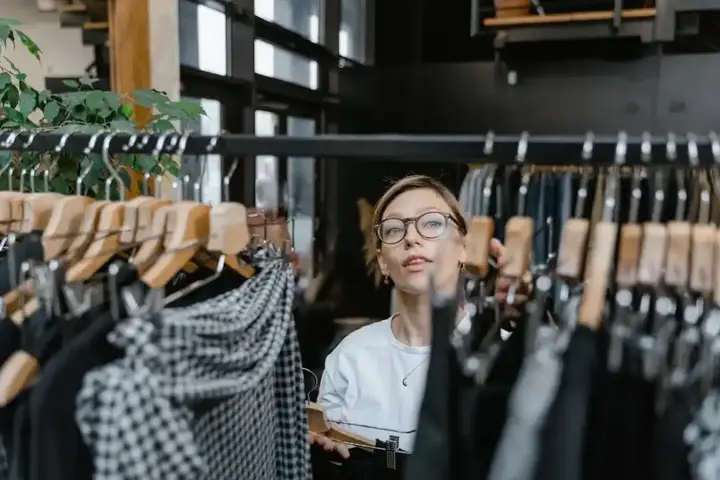Clothing Trading - Hidden Tetanus Discovery
The clothing trade is one of the most important types of trade at all times and places. A treasure that cannot be hidden, and the lucky one who knew his right path. It is also important to have a passion for clothing trading and a good knowledge of the market and fashion trends.
Show key points
- Success in the clothing trade requires a combination of market knowledge, passion, and the ability to adapt to changing fashion trends and customer preferences.
- Choosing the right category of clothing—such as children's, women's, or sportswear—based on profitability and market demand is essential for business growth.
- Understanding your target customer, including their age, lifestyle, and fashion preferences, helps tailor your products and marketing effectively.
- ADVERTISEMENT
- The location of the business, whether a physical store, online platform, or in a tourist area, plays a significant role in visibility and sales potential.
- Sales methods vary between retail and wholesale, with modern options like e-commerce offering broad reach but requiring digital skills.
- A solid marketing strategy using both online tools like social media and traditional methods such as billboards is key to attracting and retaining customers.
- Maximizing profits involves effective inventory management, building customer loyalty, choosing quality products, and analyzing sales data for informed decisions.
In general, it can be said that the most profitable types of clothing trade are those that meet specific needs of the market with high quality, affordable prices with excellent customer service. Profitability in this area also depends on hard work, careful planning and the ability to adapt to fashion trends and customer needs. Profit in the clothing business depends on many factors.
Type and classification of clothing:
Recommend

There are several types and classifications of clothing, you can choose one or several types. But you need to have a good understanding of the classification, as well as the market requirements for each type. Understand your customers in terms of their needs and desires and determine which clothes suit them.
Among the most famous examples of classifications:
Children's clothing: It enjoys a steady demand, is characterized by high profit margin, but requires keeping up with the latest children's fashion.
Women's clothing: It witnesses a great diversity of tastes and types, which provides wide opportunities for profit, but it requires careful study of market needs.
Men's clothing: It is relatively stable in fashion, making it a less risky option, but the profit margin may be lower.
And we find a lot of types:
Branded clothing: Sold at higher prices, but require more capital.
Modern clothes: They are very popular, enjoy high demand, but may quickly lose their splendor and interest. You may face strong competition from large stores and brands.
Basic clothing: Sold at reasonable prices, but profit margin may be lower.
Luxury clothing: Achieves high profit margins, but requires large capital and targets a specific segment of customers.
Sportswear: It is very popular, especially with the increasing interest in fitness, especially among young people, but faces competition from international brands.
Used clothes: can be profitable, especially if carefully selected, cleaned and well presented, suitable for markets with low economic conditions.
Know Your Customer - Target Category:

You have to choose a specific age group such as children, young people or the elderly. And there is a certain type of customer such as veiled women, sports lovers, or fashion lovers. You also have to select a market, such as covering a specific geographical area, residential, commercial or tourist area.
Children: They grow rapidly, which means buying new clothes frequently. Their clothes require special attention to quality, safety and attractive colors.
Women: Keen on fashion, tend to buy various modern clothes, with a focus on fashion and brands. Which makes them more likely to buy new clothes.
Men: tend to buy less clothing, practical basic clothing, with a focus on quality and value. But they may spend more on each piece.
Where you will sell - store location:

Densely populated locations: attract more customers, but the cost of rent can be high and strong competition.
Tourist sites: attract customers from outside the region, but it may be seasonal.
E-commerce: It provides a wider range of customers, providing global reach to customers, but requires strong marketing skills and effective logistics management.
Malls: Provide significant exposure to customers, but may require high fees.
How you will sell - how to sell:

Among the familiar ways of selling:
Retail: Clothing is sold at fixed prices to individual customers.
Wholesale: Clothing is sold in bulk at a discounted price to merchants.
Therefore, in modern times, you have two options:
Online commerce: Clothing is sold online through a website or e-commerce platform. It allows reaching a wide audience with a limited budget, but requires effort in marketing, promotion, and online store management.
Selling clothes in a brick-and-mortar store: It requires more capital, but it may be more profitable in the long run, especially if the location of the store is special.
How you will market what you sell - marketing strategy:

Online marketing: through social media, sponsored advertising, and SEO.
Traditional marketing: through advertisements in newspapers and magazines, billboards, and promotions.
Distinguished customer service: to build customer loyalty and attract new customers.
Practical tips to increase profit in the clothing business:

Buy clothes at competitive prices, where search for the best suppliers and get discounts on large quantities. Taking into account the cost of goods, operational costs and target profit margin.
Build strong relationships with customers and encourage them to return.
Manage inventory effectively and periodically to avoid shortage or excess of inventory.
Track and analyze buying and selling data to monitor sales and profit to determine the best products and customers and make decisions based on numbers.
Choose high-quality clothes at affordable prices + keep up with the latest fashion. The quality of clothing is one of the most important profit factors, as it attracts customers and reduces returns.
Look for new opportunities to increase sales, such as selling clothes online or participating in exhibitions.
![]()
How to develop your self-confidence?: The journey of character building and self-development
Self-confidence is a powerful inner force that grows through experience, reflection, and personal development. It's not inherited but built over time. With positive thinking, healthy habits, and clear goals, anyone can strengthen their self-worth and face life with courage and resilience. more- ADVERTISEMENT
![]()
Personal Success: Practical Steps Towards Achieving Goals
Personal success is about finding happiness in your own growth and goals, not just wealth or fame. It's a journey shaped by your values, efforts, and ability to adapt. Success comes from setting clear goals, staying motivated, and learning from every step along the way. more- ADVERTISEMENT
![]()
Virtual reality technologies: How are they changing the way we learn and entertain?
Virtual reality is transforming how we learn and play—students can explore ancient civilizations or the human body in 3D, while gamers and movie lovers dive into immersive worlds. It’s also sparking creativity, letting artists and designers bring bold ideas to life in virtual spaces. more- ADVERTISEMENT
![]()
The Genius of Nature: 8 Amazing Technological Innovations Inspired by Nature
Nature has sparked incredible inventions—from quieter express trains shaped like kingfishers to painless needles modeled after mosquitoes. Even butterfly wings help improve solar cells. These smart ideas not only improve our daily lives but also open big doors in tech and business. more- ADVERTISEMENT
![]()
The most fascinating discoveries we have made to explore Jupiter
Jupiter’s Great Red Spot, a massive storm lasting centuries, and the mysterious, possibly liquid core make it a planet full of extremes. Its moons—especially Europa with its hidden ocean—offer exciting clues about extraterrestrial life. With Juno and upcoming missions, the future of exploring this gas giant looks thrilling. more- ADVERTISEMENT
![]()
Time poverty: modern distress and how to escape from its grip
Despite all our modern tech advantages, many feel trapped in a cycle of busyness, constantly short on time. This sense of “time poverty” drains well-being and productivity. The key to breaking free? Align with what truly matters, simplify life, practice mindfulness, and build healthier ways to cope with stress. more- ADVERTISEMENT
![]()
Post-pandemic travel: reshaping the future of tourism
The pandemic reshaped travel, pushing people toward local, safer, and more personalized adventures. Technology now guides safer journeys, while hotels and airlines adapt with flexible and health-focused options. As the world reopens, travelers seek meaningful, sustainable experiences—reflecting a new era of conscious and responsible tourism. more- ADVERTISEMENT
![]()
Moving forward still represents progress: trusting the process and taking my own best advice
Moving forward still represents progress: trusting the process and taking my own best advice more- ADVERTISEMENT
![]()
Why do people buy? Simplifying the theory of purchase
Understanding why people buy is key in commerce—whether it's to meet basic needs, fulfill desires, or express identity. Buying behavior is shaped by psychological, social, economic, and marketing factors, and recognizing these helps create better marketing strategies that truly connect with consumers. more- ADVERTISEMENT
![]()
Social entrepreneurship: How do your projects make a positive impact on society?
Social entrepreneurship is all about using innovative ideas to solve social and environmental problems while creating jobs and boosting the economy. It’s growing fast in the Arab world, especially in places like Egypt and the UAE, offering hope for a better, more sustainable future despite funding and awareness challenges. more- ADVERTISEMENT





















